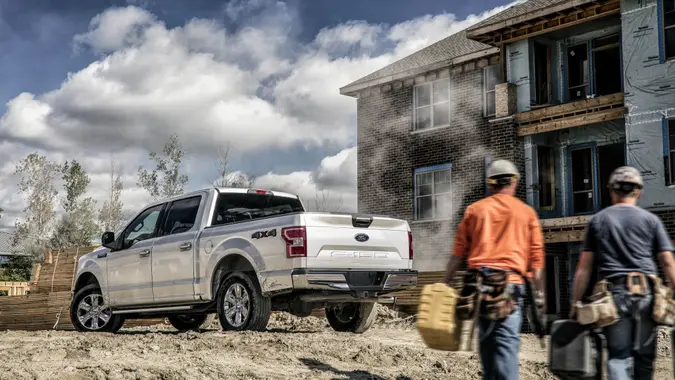Here’s How Much the Definition of Middle Class Has Changed on the West Coast

Commitment to Our Readers
GOBankingRates' editorial team is committed to bringing you unbiased reviews and information. We use data-driven methodologies to evaluate financial products and services - our reviews and ratings are not influenced by advertisers. You can read more about our editorial guidelines and our products and services review methodology.

20 Years
Helping You Live Richer

Reviewed
by Experts

Trusted by
Millions of Readers
Middle class is a term that extends to a pretty wide spectrum of income in the United States, from around $50,000 to $150,000. Though that range is wide, it has changed a lot over the last decade, taking more and more to qualify for that definition.
For example, in 2012, a median household income of $35,364 put you in the lower end of the middle class; but by 2022, that minimum threshold began at $50,099. On the other end of the spectrum, in 2012, the highest household income considered to be middle class was $106,092. Just a decade later, that high end had reached $150,298. That’s a 41.67% increase in just 10 years.
These rates of increase vary from state to state and region to region. In the states that comprise the West Coast (or the Pacific West, to be more specific) — California, Oregon, Washington, Alaska and Hawaii — that rate is even higher, with Oregon seeing the highest growth rate of 53.15%. These states are often coveted places to live, with coastal access, pristine natural attractions and thriving economies, which drive up the cost of living, thus the amount you need to earn to afford to live there.
To find the household income needed to be middle class in West Coast states, GOBankingrates defined “middle class” as those with an annual household income that is two-thirds to double the median income.
Here are the rates of growth for middle-class income ranges in these five states.
California
- 2022 middle-class income range: $61,270 to $183,810
- 2012 middle-class income range: $40,933 to $122,800
- 10-year change in middle-class income (%): 49.68%
Oregon
- 2022 middle-class income range: $51,088 to $153,264
- 2012 middle-class income range: $33,357 to $100,072
- 10-year change in middle-class income (%): 53.15%
Washington
- 2022 middle-class income range: $60,217 to $180,650
- 2012 middle-class income range: $39,583 to $118,748
- 10-year change in middle-class income (%): 52.13%
Alaska
- 2022 middle-class income range: $57,580 to $172,740
- 2012 middle-class income range: $46,611 to $139,834
- 10-year change in middle-class income (%): 23.53%
Hawaii
- 2022 middle-class income range: $63,209 to $189,628
- 2012 middle-class income range: $44,995 to $134,984
- 10-year change in middle-class income (%): 40.48%
Methodology: For this piece GOBankingRates first sourced the 2012, 2017 and 2022 household median income of every state as sourced from the 2012, 2017 and 2022 American Community Surveys as conducted by the U.S. Census Bureau. With these median household incomes isolated, GOBankingRates was able to find middle-class income ranges for each respective year with the following definition: Those with an annual household income that was two-thirds to double the national median income. For each state, GOBaningRates found (1) 2022 middle-class income range; (2) 2017 middle-class income range; (3) 2012 middle-class income range; (4) 10-year change in middle-class income range; and (5) 10-year percent change in middle-class income. All data was collected and up to date as of April 8, 2024.
More From GOBankingRates
- Nearly 1 in 3 Americans Hit by a Costly Holiday Scam, Norton Survey Shows -- How To Avoid This
- Here's What the Average Social Security Payment Will Be in Winter 2025
- How Middle-Class Earners Are Quietly Becoming Millionaires -- and How You Can, Too
- The Easiest Way to Score $250 for Things You Already Do
 Written by
Written by  Edited by
Edited by 

























